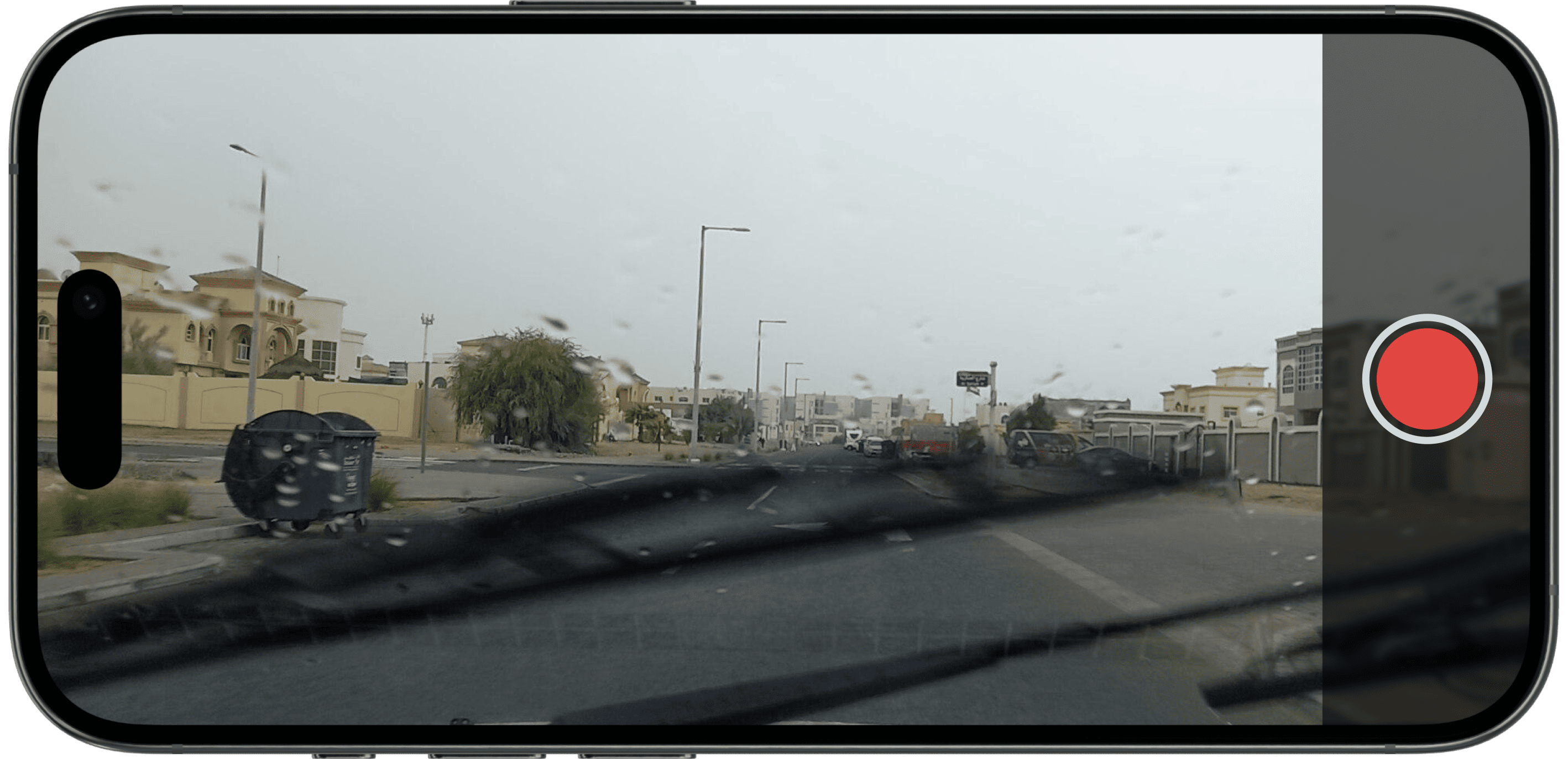Recording requirements
To get high-quality frames for object detection and analysis, follow the requirements below.
An example of a high-quality frame with the correct camera position and recording conditions:
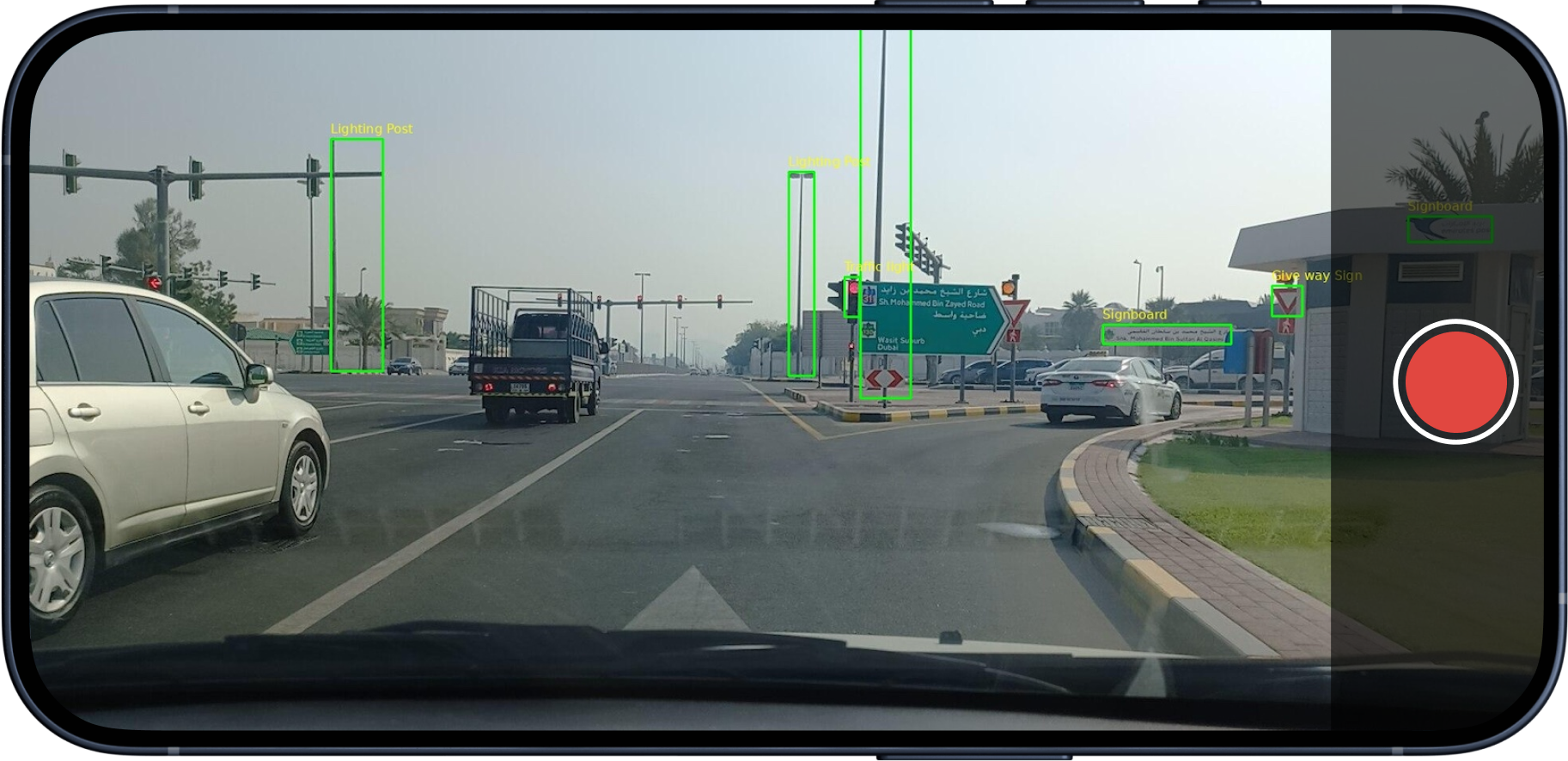
Camera and mounting requirements
Before recording, make sure that the device with the camera is safely mounted in the car and that the camera allows you to record road signs and the required objects:
-
To prevent vibrations when moving and blurry frames, use a car holder with a minimum number of joints and a short arm to mount the device. The device should be tightly fixed in the center of the holder.
An example of an appropriate holder:
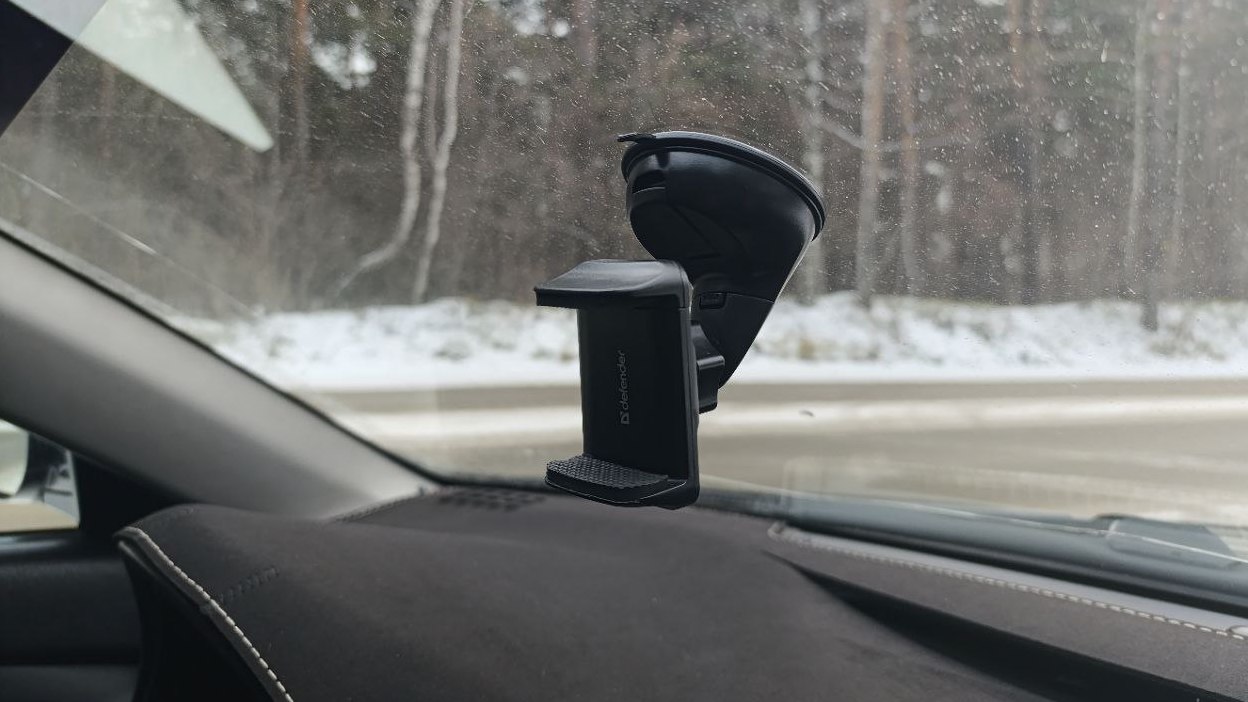
An example of an inappropriate holder:
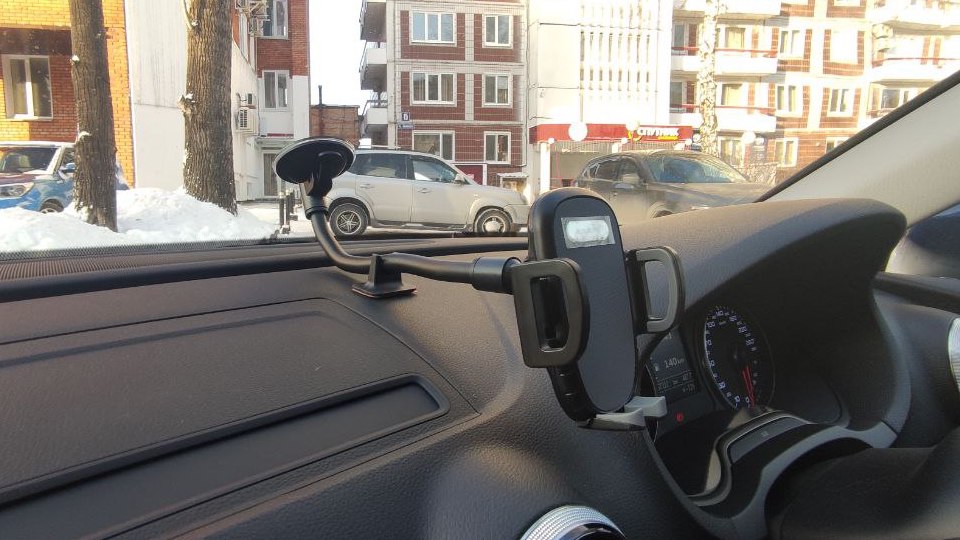
-
The holder and device must not distract the driver while driving.
-
The holder must allow you to connect the device charger while recording.
-
The camera must be rotated straight ahead in the direction of the road and focused on it.
-
The position and bearing of the camera should be adjusted so that the road signs to the right of the road and above it are in the frame.
-
The car body and the device holder should be in the frame as little as possible.
-
The dashboard of the car should take up no more than 20% of the frame.
Recording conditions requirements
When recording, follow the requirements:
-
The device must constantly receive a GPS signal. If the signal is lost, stop driving and wait until the connection to the satellite is restored. Then continue driving.
-
If the road has from one to three lanes in the travel direction, move along the far right lane. If the road has more than three lanes, move along the second lane from the right. You can move along other lanes only when it is necessary to complete a maneuver.
Example of a low-quality frame with driving in the wrong lane
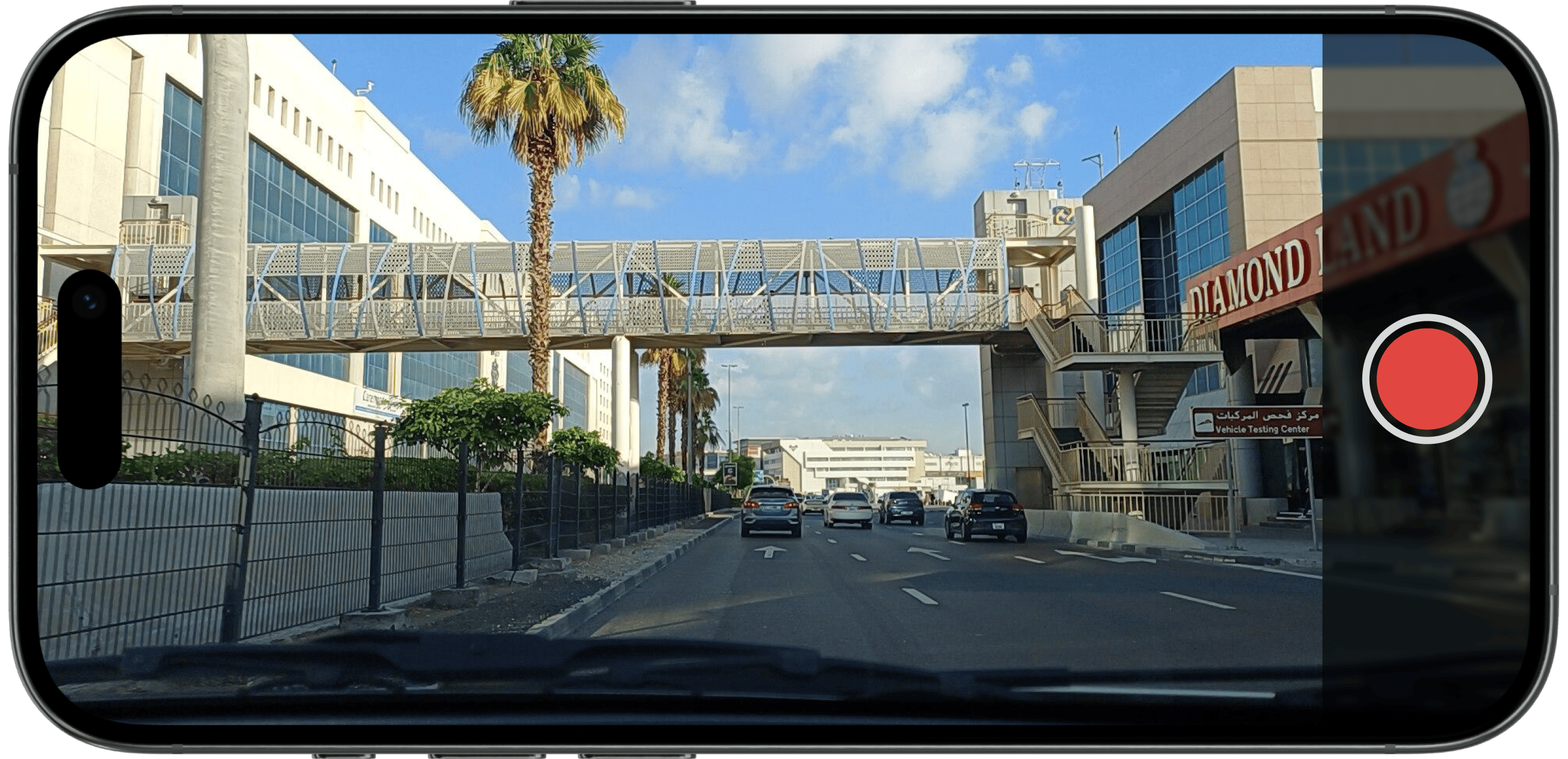
-
Do not drive closely behind large-sized and public transport to make sure that road signs are in the frame. You can overtake large-sized vehicles if there are no signs on the road part or if there are only service signs. Keep a distance from nearby cars at which exhaust gases do not affect visibility.
-
Keep an average speed of 30 to 50 km/h in residential areas and no more than 70 km/h outside them. You can exceed this speed if there are no signs on the road part or if there are only service signs.
-
The windshield must be clean, without cracks, drops, snow, or other visual obstacles. Objects on the console must not be reflected on the windshield.
Example of a low-quality frame with drops on the windshield
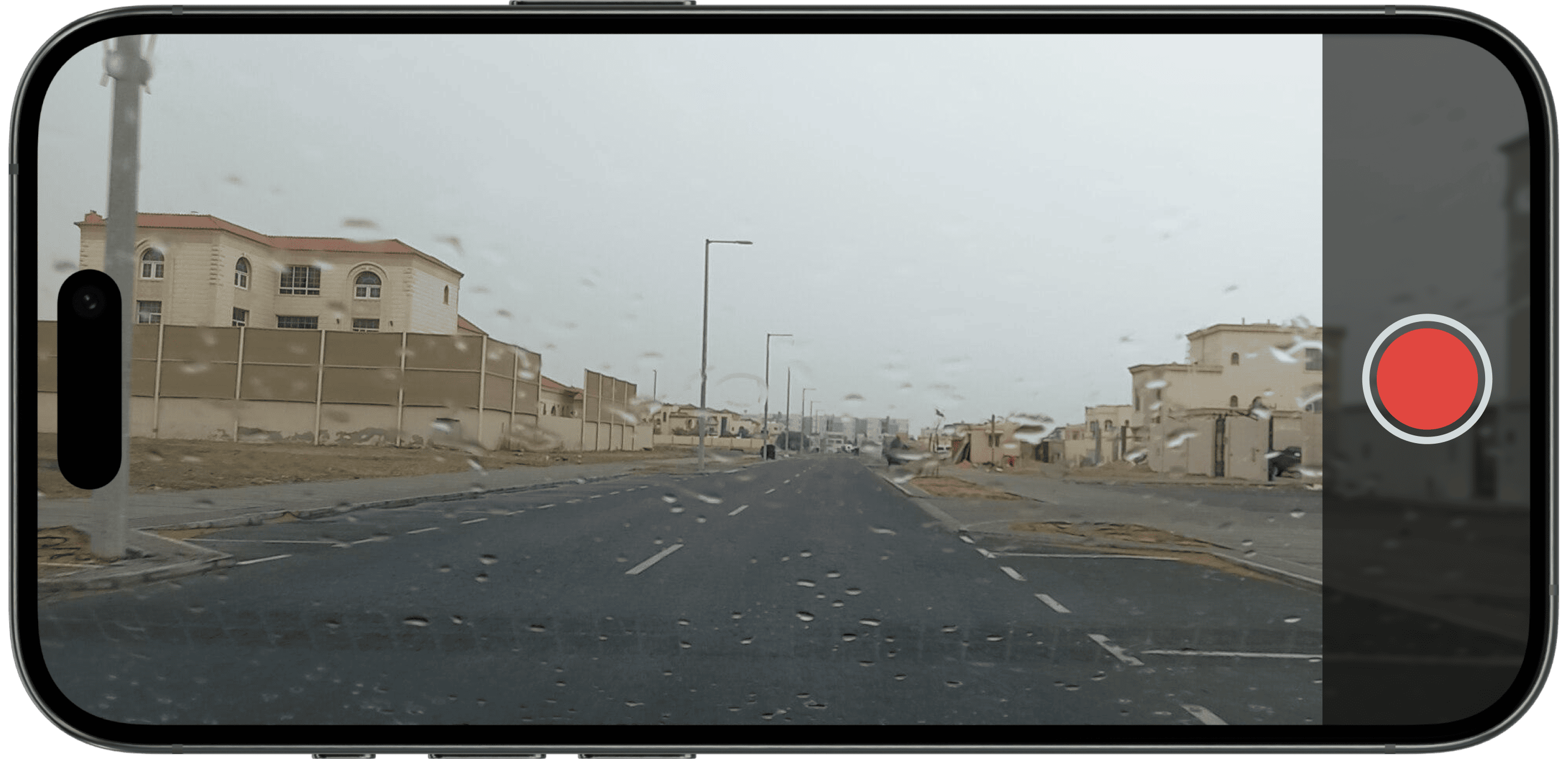
-
The sun must not be reflected on the windshield. Plan routes considering the cardinal directions, for example, do not record on roads facing east in the morning.
-
Record during daylight hours: an hour after sunrise and an hour before sunset.
Example of a low-quality frame with darkness
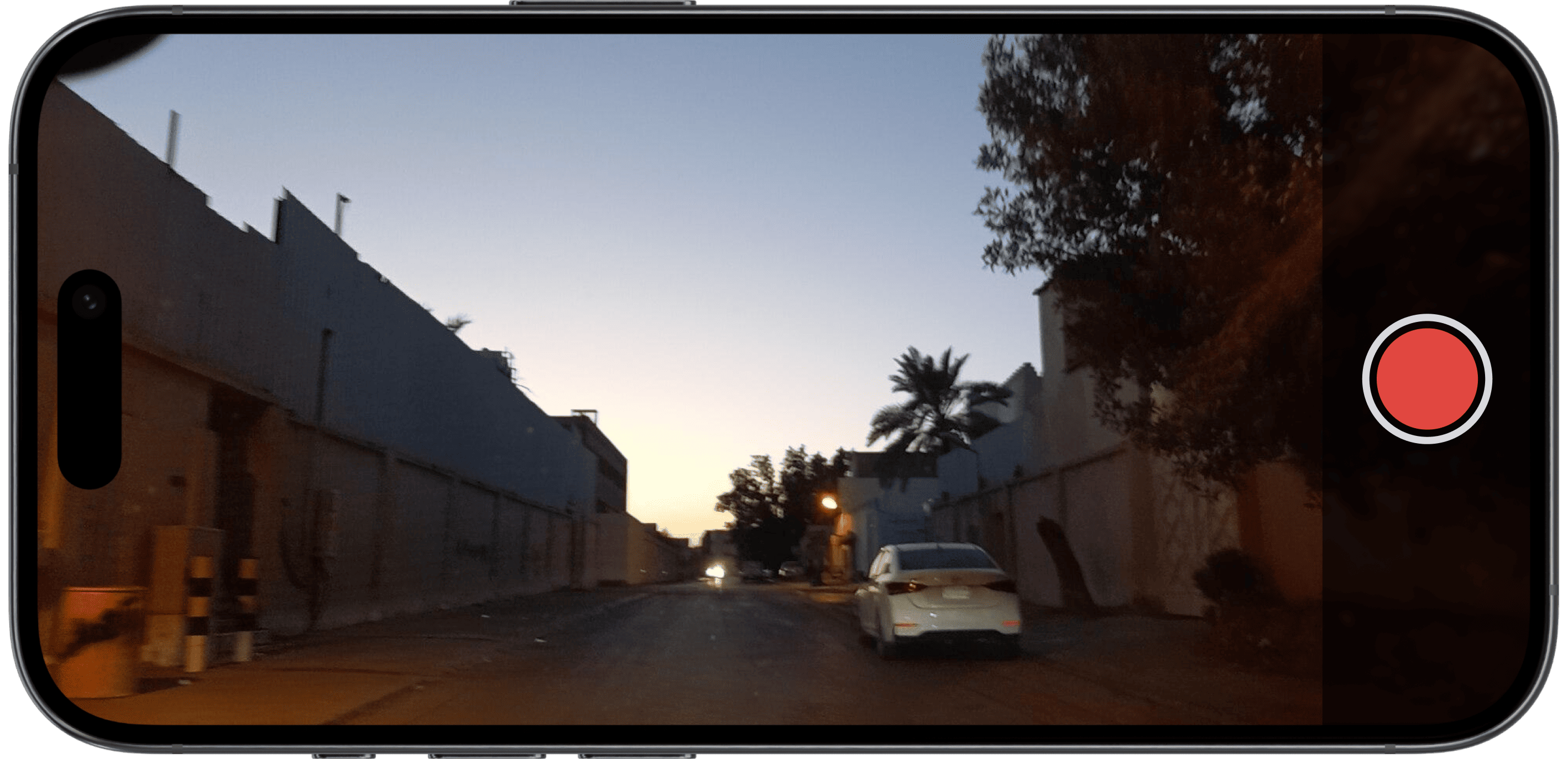
-
Record only under good visibility conditions. Do not record during rain, snowfall, fog, or other bad weather conditions. If precipitation begins during recording, stop driving. 15 minutes after the precipitation stops, clean the windshield and continue driving. Do not turn on the wipers while recording.
Example of a low-quality frame with working wipers
